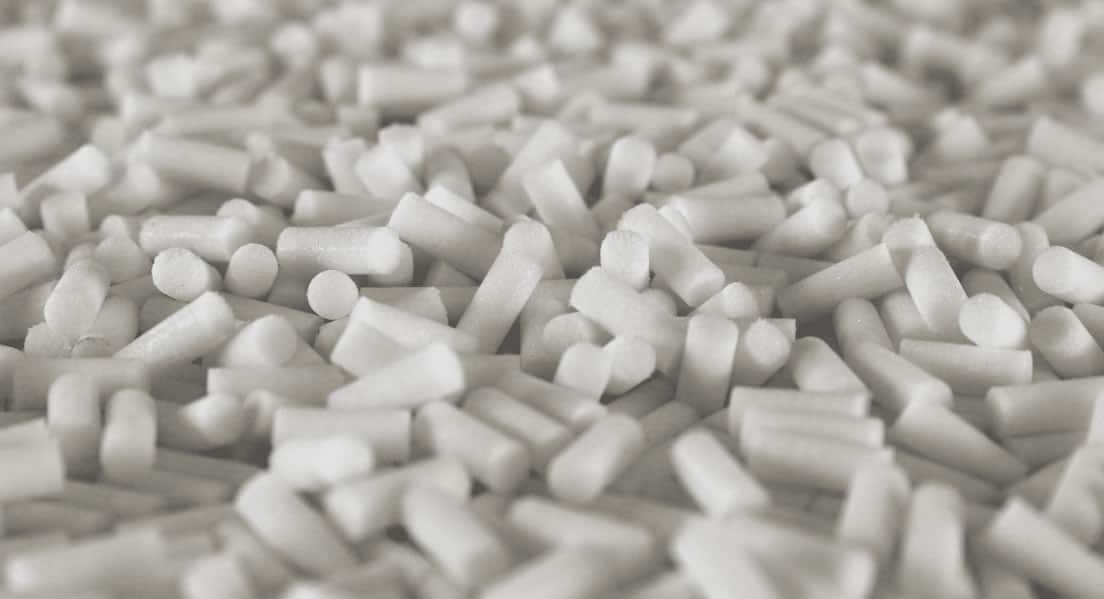
Sintered plastic is manufactured by a proprietary process that enables the designing and manufacture of porous plastics into 3D and 2D components. The particles are made from various types of polymers that have controlled pore sizes that result in exceptional strength, resiliency, design flexibility, durability, and chemical resistance. The linked pores allow for efficient fluid communication inside the part.
Engineered from different thermoplastic materials with different properties, PE plastic is moldable so it is used for high-volume applications. You can also customize these plastics for easy conversions and fabrications. The factory plastics come in rolls, sheets, and other material forms to meet your specific needs.
How is Sintered plastic manufactured?
The process of manufacturing sintered porous plastics involves a combination of pressure and heat to bond the raw materials together. The aim isn’t to alter the properties of the starting materials, but to end up with a porous material suitable for a particular use.
Material options
There are various materials that can be used to manufacture sintered plastic products like a PE filter. The materials are selected based on what you want to achieve in the end, and it’s a critical part of the initial engineering and design process. Below are four of the main materials used for sintering and their key traits that make them so desirable:
Polyethylene (PE)
Polyethylene boasts a large range of pore sizes and is the most popular material in plastic sintering. It is the preferable material in high-end processing.
Polypropylene (PP)
Polypropylene is the material of choice in applications that require a large pore size and rigid structure.
Polytetrafluoroethylene (PTFE)
PTFE is most applicable where high chemical tolerance or high-temperature resistance is needed.
Polyvinylidene Flouride (PVDF)
PVDF is the perfect material in applications in which the device is susceptible to damage by oxidizing solvents or agents.
Although these tend to be the most common materials in the manufacture of sintered plastic, there exist many kinds of materials depending on the needs of your end product. Consult your application engineer to help define the specifications you want and they will help you choose the best materials for the job.
Where is Sintered Plastic Used?
Sintered plastic and PE filter have a range of applications in different industries. Here are some of the most common applications of sintered plastic.
Apply- Beauty applicators and pure reservoirs enable the precise application. Well-made blenders and applicators create a consistent feel, uniform flow, and a high-quality end product guaranteed to perform and feel flawless.
Filter- Nowhere is filtration properties more important than in the healthcare sector. To address the problem of cross-contamination, a PE filter is made with several types of absorption, filtration, and ventilation. It’s critical to select a pore size that gives you the highest degree of protection. The PE filter in spray pumps and nasal inhalers is a perfect example of filters that need to be hygienic to produce the most accurate amount of drugs.
Vent- components that can keep dirt and dust out are critical in sensitive electronics. Sintered plastic products include isolator electrolyte holding media, separators, and EV and fuel cell vents.
Diffuse– Distribution and diffusion properties are an absolute must for 3D printers. 3D printing requires razor-sharp precision in filters, vents, absorption media, and wicks to get a flawless product.
Wick– The best air freshener for the home should be consistent and long-lasting, and should deliver fragrance mists via permeable sintered particle wicks using capillary action specifically designed for the formula being discharged.
Physical properties of sintered plastic
It is important to understand the most important physical properties when you want to design a sintered plastic component. That’s because the properties affect the functionality of the part and materials.
Proper understanding of the properties of the materials will be helpful when you are choosing the right polymer for the operating conditions and function of your device. Below are some characteristics to keep in mind when choosing materials for your PE filter.
Pore Size: Pore size refers to the void size in the porous material. Pore size can be very small to the point they handle glasses, or even large to manage liquid materials. The choice of the pore size depends on the processing amount and the material.
The size of the pores has a bearing on wicking speed, filtration efficiency, flow resistance, and wicking distance.
Pore Volume: It refers to the air percentage in the sintered plastic component compared with the entire volume of the component. Flow state will depend on how your gas or liquid will pass through your preferred materials. Sintered plastics can create small or large spaces capable of holding just the right amount of liquid. The reason the pore volume is critical is that it has a direct impact on the flow resistance and absorption volume of your component.
Operating Temperature: Another very critical property of sintered plastic material is operating temperature. It refers to the range of temperature that the final plastic will be needed to function.
Additive options
Treatments and additives give you endless possibilities for the sintered plastic component of your choice. Here are a few treatments and additives used with the polymers mentioned above:
Polypropylene (PP) and Polyethylene (PE) use these options:
- Hydrophilic treatments
- Color change
- Self-healing liquid barrier
- Potable water, carbon, odor elimination
- Bactericidal/bacterial static
- Ion exchange
For PTFE, these are the acceptable options:
- Polypropylene scrim support
- Oleophobic treatment
Geometric options
- Tubes
- Rods
- Nibs
- Complex and simple 3D shapes
- Standard rolls or sheets2D Plugs
Assembly & converting options
The options for customizable assembly and converting are endless. Some of them include the following:
- Die-cutting
- Press-fit
- Thermal & ultrasonic welding
- Pressure-sensitive adhesives
- Overmolding
Conclusion
Sintered plastics have a wide range of industrial applications. They are used in the medical sector and also other industries. This article introduces sintered plastics, their applications, properties, and additive options. Having an understanding of these things about sintered plastics will help you to choose the best polymer material that delivers optimum functionality.




